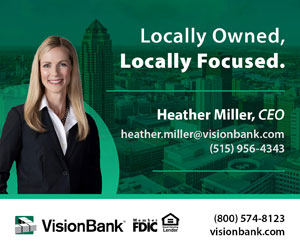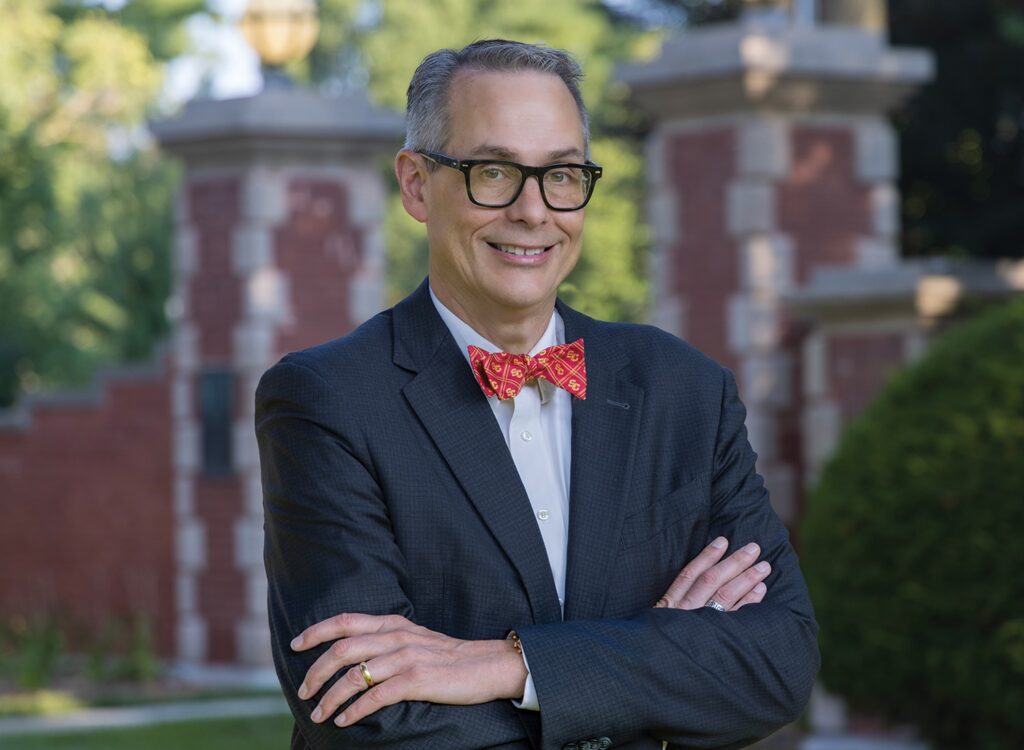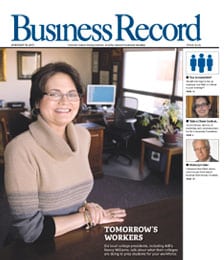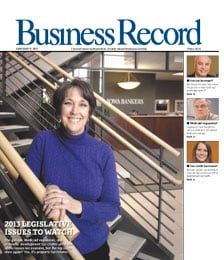Fighting for the future of private higher education

With projections of a drop-off in Iowa’s college-age population, a growing fear in the halls of universities around the state is a proportional decline in college enrollments.
For state universities, this may mean being forced to lay off faculty and eliminate programs. For community colleges, which have grown tremendously in recent years, smaller student bodies could leave them overbuilt and overstaffed.
But for private colleges, especially smaller ones, a drop in enrollment could mean something far worse than layoffs. It could mean closing their doors for good.
“It’s about survival,” said Kathleen Gannon, director of marketing and public affairs for the Iowa Association of Independent Colleges and Universities. “Adapt or die. Every one of us – community colleges, Regent schools and private schools – will be affected by this. The difference is private schools don’t have state support to help cushion the fall.”
The U.S. Census Bureau projects that Iowa will have 22,000 fewer people between the ages of 18 and 24 in 2010 than it had in 2000. By 2030, that number will be down more than 51,000.
“It could become increasingly difficult for some institutions to meet their enrollment goals,” said David Maxwell, president of Drake University. “We haven’t felt the impact at Drake, but many schools will, and it could have a dramatic effect on what they are capable of doing.”
Gannon said such a drop-off would dramatically affect the finances of private schools.
“You would still have to pay professors, make sure the lights turn on, feed students, get beds for students, and all the other costs,” she said. “So, a huge decline in students would punch a hole in the school’s budget, and tuition would have to go up.”
Gannon said the fear would be that tuition would increase so much that the schools would have trouble attracting students, thus compounding the problem. At that point, if the schools couldn’t raise enough money in grants and scholarships to buy down tuition, their future would be in jeopardy.
“Schools could get priced out of the market,” she said. “Private schools spend a lot of time raising scholarship money and institutional aid. They gave away around $200 million in grants last year. Public schools start off with a state subsidy of around $11,000 per student. We don’t get that, so that has to come from tuition.”
David Roe, president of Central College in Pella, said that though the number of college-age students may decline, if the percentage of students in Iowa who go to college increases, then the problem could be avoided.
“We need to work to ensure 100 percent of teens graduate from high school and go on to some form of post-secondary education,” he said. “But we not only need to get them to college; we need to make sure they are prepared for college.”
Roe said universities use a lot of resources on students who are not prepared for college life, resources that could be used elsewhere.
“When we accept a student, we have a moral commitment to ensure they make it through college successfully,” he said. “A significant percentage of students are taking improvement courses when they arrive because students haven’t learned how to learn.”
During its last session, the Iowa Legislature did set higher standards for high schools, Roe said, but he believes lawmakers must go further.
“They mandated three years of science and math,” he said. “That is definitely a start, but we should really be doing four years.”
Maxwell said raising the percentage of high school students who graduate is vital, but that alone will not solve the problems facing private universities.
“We need to attract those groups who normally wouldn’t be looking at attending our institutions,” he said. “One of the biggest groups who fit into that category is the growing immigrant population. Many of them are first-generation college students, and they may not look at private schools because they think the cost is prohibitive. We need to change that perception.”
Maxwell said 98 percent of students attending Drake receive some type of financial aid, averaging around $15,000 a student.
“They look at the ‘sticker price’ but that isn’t what they will be paying,” he said.
Gannon said private colleges are sometimes a better fit for first-generation students because of the intimate class sizes.
“They are less likely to fall through the cracks,” she said.
Gannon said the Iowans for a Better Future Higher Education Task Force is working on a marketing campaign to attract students from other parts of the country to Iowa schools.
“In many areas, such as California, Florida and Arizona, the student population is actually growing, and colleges are turning students away,” she said. “We need to tap into that market and let them know how good our schools are and what the state of Iowa has to offer.”
The campaign, which will be a joint effort of Iowa’s private schools, state universities and community colleges, will attempt to sell the state as a place where students from around the country can live, learn, work and eventually stay. They hope the state will put as much energy into attracting students as attracting businesses.
“Iowa isn’t the only state facing these types of scary demographics,” Gannon said. “So we are going to be in competition with other states as well. We need to get out in front of this problem in order to avoid the problems in the future.”
Every year, around 45,000 out-of-state students come to Iowa to attend college, according to the task force. Each student spends around $13,000 a year, meaning they bring $585 million annually into the state. But in a recent nationwide survey, only 3 percent of respondents living outside the state rated Iowa as one of the best states when it comes to education.
“The survival of private colleges is at stake,” Gannon said. “And these schools bring a lot to the table for the communities they are a part of. Losing one of these institutions would be a terrible blow to the vitality, cultural opportunity and opportunity in general of these communities.”
Maxwell said Iowa is blessed with a large variety of higher education options, and that message needs to get out.
“How do you get people to take a look at us and consider Iowa and private universities?” he said. “It’s a marketing problem that we must work on.”







